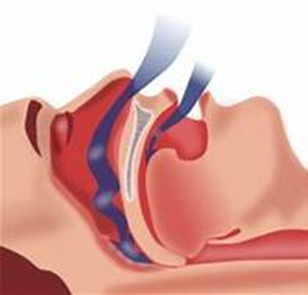A patient has fallen and injured her knee.
It is not fractured, but there is considerable swelling and pain.
She asks which over-the-counter analgesic would be best to take for her discomfort.
The nurse tells her that one with NSAID properties would be best.
Which would it be best to take?
oxymorphone.
ibuprofen.
Acetaminophen.
aspirin.
The Correct Answer is B
Choice A rationale:
Oxymorphone is not an NSAID (Non-Steroidal Anti-Inflammatory Drug). It is an opioid analgesic, which is used for more severe pain relief. It is not suitable for managing swelling and pain caused by an injury.
Choice B rationale:
Ibuprofen is an NSAID and is an appropriate choice for managing pain and swelling associated with injuries like the patient's knee injury. NSAIDs work by reducing inflammation, which can help alleviate pain and discomfort in such cases.
Choice C rationale:
Acetaminophen is not an NSAID. It is classified as an analgesic and antipyretic, and while it can help with pain relief, it may not be as effective in reducing inflammation, which is essential in cases of swelling due to an injury.
Choice D rationale:
Aspirin is an NSAID, but it is not the best choice for this patient. Aspirin is known to have a higher risk of gastrointestinal side effects, and there are other NSAIDs like ibuprofen that are generally preferred for pain management and inflammation without the same level of side effects.
Nursing Test Bank
Naxlex Comprehensive Predictor Exams
Related Questions
Correct Answer is C
Explanation
The correct answer is: C. Decreased energy.
Choice A reason: Hypotension is not typically associated with obstructive sleep apnea (OSA). OSA is more commonly linked with hypertension due to the frequent arousals during sleep that activate the sympathetic nervous system, leading to increased blood pressure.
Choice B reason: Pneumonia is an infection of the lungs and is not a direct consequence of OSA. While OSA can affect the respiratory system, it does not cause pneumonia. However, individuals with OSA may have a higher risk of respiratory infections due to compromised breathing during sleep.
Choice C reason: Decreased energy is a common symptom of OSA. People with OSA experience repeated episodes of partial or complete upper airway obstruction during sleep, leading to disrupted sleep patterns and insufficient rest. This results in daytime sleepiness and fatigue, which are hallmark signs of the condition.
Choice D reason: Thyroid disease, specifically hypothyroidism, can be associated with OSA, but it is not a direct finding of the condition. Hypothyroidism can lead to changes in the soft tissues of the upper airway and contribute to the development of OSA, but it is not a symptom used to diagnose OSA.

Correct Answer is A
Explanation
Choice A rationale:
The Neonatal Infant Pain Scale (NIPS) is commonly used to assess pain in newborns and infants. It evaluates multiple indicators of pain, including facial expression, crying, breathing patterns, and arms and legs' movements, to determine if a baby is in pain.
Choice B rationale:
The FACES pain rating scale for children is not typically used for infants, as it relies on a child's ability to point to or describe their pain using facial expressions.
Choice C rationale:
The Premature Infant Pain Profile (PIPP) Scale is used primarily for preterm infants and not typically for all newborns. It is more specific to certain populations.
Choice D rationale:
The FLACC Scale (Face, Legs, Activity, Cry, Consolability) is used for assessing pain in young children who may not be able to self-report. It's not specific to infants, and the NIPS is more appropriate for this population.
Whether you are a student looking to ace your exams or a practicing nurse seeking to enhance your expertise , our nursing education contents will empower you with the confidence and competence to make a difference in the lives of patients and become a respected leader in the healthcare field.
Visit Naxlex, invest in your future and unlock endless possibilities with our unparalleled nursing education contents today
Report Wrong Answer on the Current Question
Do you disagree with the answer? If yes, what is your expected answer? Explain.
Kindly be descriptive with the issue you are facing.
